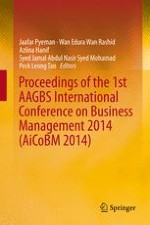2016 | OriginalPaper | Chapter
7. Linking Entry Timing (ET) and Entry Mode (EM) Decisions in International Market Expansion by Malaysian Construction Firm: Toward the Development of ETEM Model
Authors : Che Maznah Mat Isa, Hamidah Mohd Saman, Aini Jaapar, Siti Rashidah Mohd Nasir
Published in: Proceedings of the 1st AAGBS International Conference on Business Management 2014 (AiCoBM 2014)
Publisher: Springer Singapore
Activate our intelligent search to find suitable subject content or patents.
Select sections of text to find matching patents with Artificial Intelligence. powered by
Select sections of text to find additional relevant content using AI-assisted search. powered by
